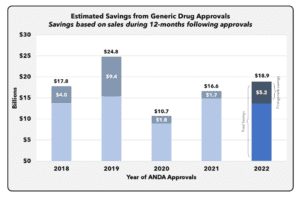2022 Financial Goal Review: A Final Look Back

It’s almost the end of the year — and while you may be thinking about holiday shopping, holiday travel and how you can budget for any unexpected end-of-year expenses, it’s worth taking a few minutes to ask yourself how you did on your 2022 financial goals.
Over the past year, we’ve brought you expert advice on how to make, keep and adjust your 2022 financial priorities. Whether you were hoping to build an emergency fund, get out of debt or start saving for your first home, we helped you learn how to set SMART goals, evaluate your progress and — in some cases — get back on track:
Now we’re going to wrap up our series with a look back. What should you consider when you reflect on your year? How can you evaluate your progress towards your financial goals? When should you cut yourself some slack — and when should you commit towards working harder?
We’ll also offer expert advice on how to use what you learn to set even better goals in 2023.
Be honest with yourself
The best way to begin evaluating your 2022 financial goals is by taking an honest assessment of your progress.
“Look back on the year and be honest with your progress towards your goals,” explains Jim Wang, founder of WalletHacks.
If taking this kind of assessment makes you feel uncomfortable — or if you are a little hesitant to be truly honest with yourself — remember that you don’t have to tell anyone else whether or not you achieved your goals. You also don’t have to tell anyone else whether you believe you could have done more towards some of your financial goals.
“The good thing about resolutions and goals is that you can keep them to yourself,” says Wang. “This gives you more freedom to be honest with yourself about how you did.”
If you achieved all of your 2022 financial goals, feel free to congratulate yourself — and then ask yourself whether you deliberately made your goals too easy. “Did you reach your goals too early because you were not ambitious enough?” Wang asks.
If you gave up on your goals partway through the year, ask yourself whether you deliberately made your goals too hard. “Did you give up on your goals because they were too ambitious?”
Many of us will probably find ourselves somewhere in the middle. You might have made solid progress on one or two goals, for example — and if you made more than two financial goals, you probably decided at some point that a few of those goals were no longer priorities.
This brings us to the next step in our end-of-year financial review. Why were some goals more successful than others? What worked well — and what got in your way?
It’s time to take your honesty to the next level.
Evaluate what worked for you
Once you have an honest understanding of how you did financially in 2022, you can start evaluating why your year went the way it did. The best way to begin this process is by looking back on your year and connecting actions to results.
“The goal should be to find a method that works for you to help you achieve the results you want,” Wang explains, “given what you know about yourself.”
Let’s say you wanted to set aside a $1,000 emergency fund. What actions did you take to achieve that goal?
Were these actions successful? If so, what made them successful? If not, what went wrong?
Some people may have hoped to save the emergency fund in a few big chunks, for example — by setting aside their tax refund, or taking advantage of high interest rates by putting a yearly bonus into a high-yield savings account — only to discover that whenever it came time to save the money, there was always somewhere else to spend it.
Other people may have tried to save their emergency fund through a series of automatic monthly transfers from their checking to their savings account. You might have had some success with this method — or you might have found that your transfers were too high to be sustainable long-term.
“If 2022 didn’t turn out the way you hoped,” Wang advises, “ask yourself what you could have done differently.”
Focus on the process instead of the goal
Once you have a clear understanding of how your actions affected your progress towards your 2022 financial goals, you can begin adjusting those actions as necessary.
“Focus on the process, not the goal,” Wang advises.
In most cases, falling short of a financial goal has less to do with willpower than it does with process management. If your goal was to save up a $1,000 emergency fund and you fell short, take a look at your goal from a process perspective.
Were you earning enough money to realistically set aside $84 every month, given your other financial responsibilities? Did you create a budget that allowed you to set aside the cash, and did you adjust your budget to accommodate the rising costs of inflation — or did you tell yourself you were going to save $1,000 because it was a nice round number, even though it might have been the wrong number to work towards?
“Address the holes in your process,” says Wang, “so you’ll be more likely to achieve your savings goals.”
Some of these process holes are likely to be top-level issues — picking a savings goal that is too ambitious, for example. Other process holes are administrative. If you aren’t putting money into savings every month, for example, you can plug that hole by setting up automatic monthly transfers.
Many people are likely to discover that their biggest process holes are created through procrastination. You might tell yourself that you want to save more money by cutting back on streaming services, for example, but you keep putting off the necessary cancellations.
By fixing these holes, you can set yourself up for financial success — and you don’t have to wait until 2023 to get started.
Make success the default state
Now that you know how you did financially in 2022, it’s time to set goals for your next financial year, whether it’s putting money into a retirement account, learning more about personal finance, working with a financial advisor, or finally getting life insurance.
With that in mind, here’s one more expert tip from Jim Wang: “Make success the default, and make failure something you have to activate.”
If you take one piece of advice away from this entire series, make it this one. By creating a situation in which success is the default state — whether that means buying with cash instead of credit, checking your budgeting app before each purchase or setting up automatic transfers to move money into savings before you can spend it — you’ll have built yourself a process that makes it easier to succeed than fail.
You’ll want to check in with your process throughout the year, of course — especially if you find yourself in a situation where your income or your expenses change significantly. If you feel stuck, you can always re-evaluate your progress using the steps you just learned. You can also re-evaluate your process based on how well it’s helping you progress towards your goals.
From there, all you have to do is continue to do what works — and keep adjusting what doesn’t.






